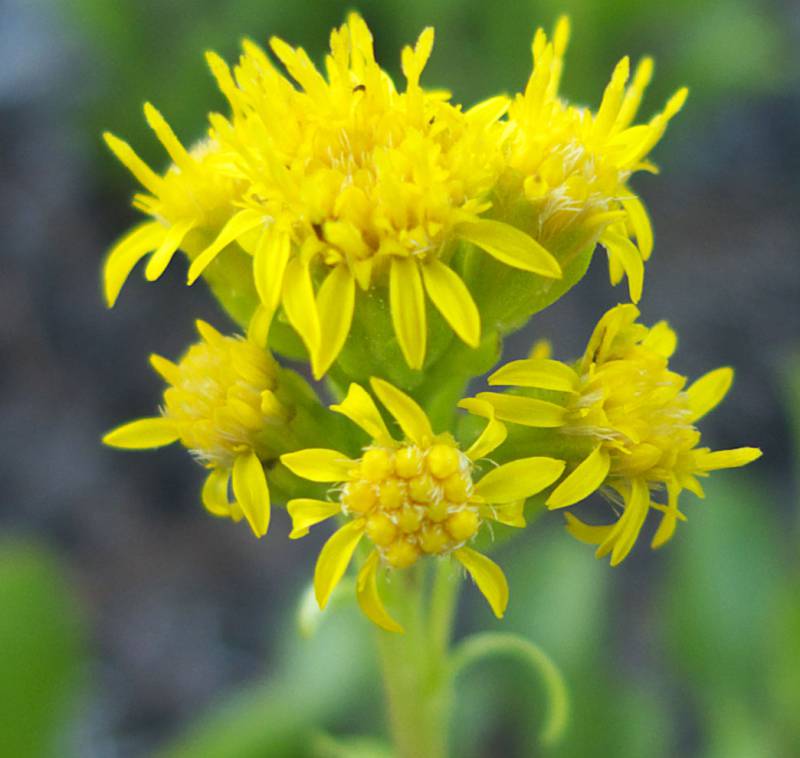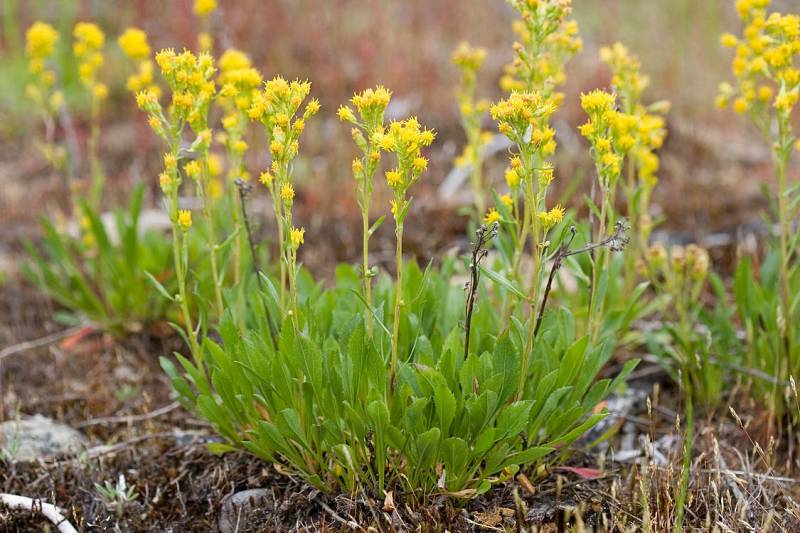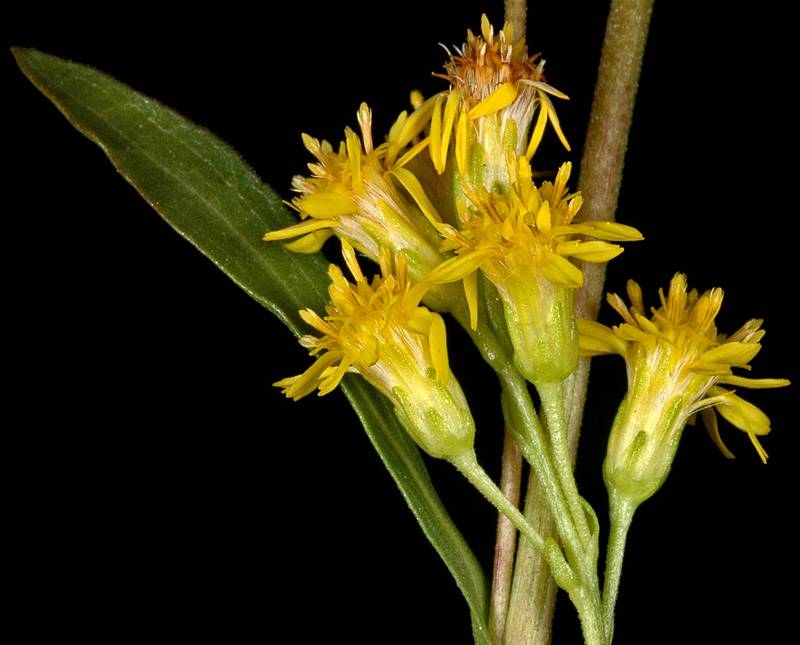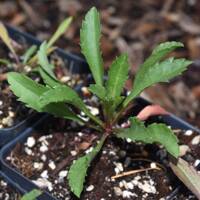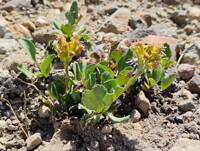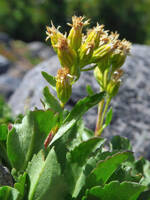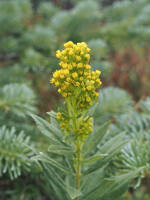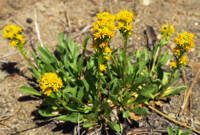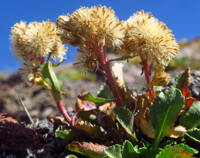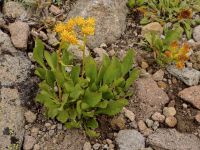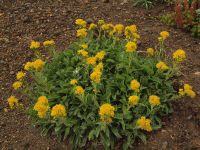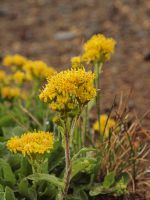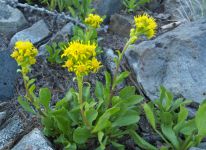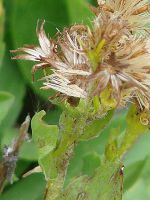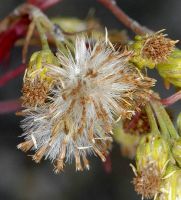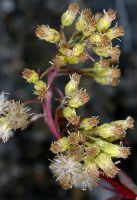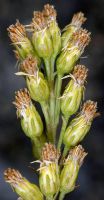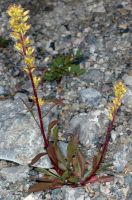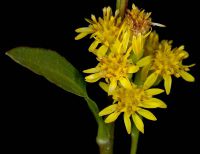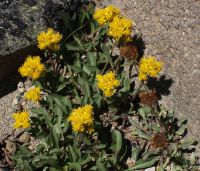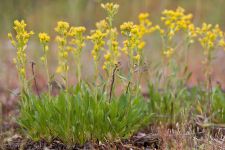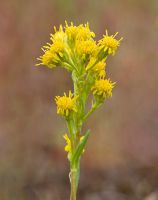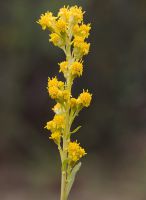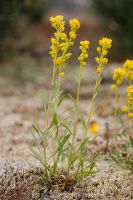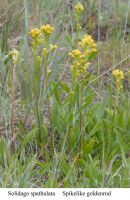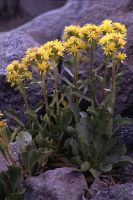Distribution: Occurring chiefly west of the Cascades crest in Washington; Alaska to Oregon, east to the Rocky Mountains, northern Great Plains, Great Lakes region, and northeastern North America.
Habitat: Open, slightly moist areas from coastal dunes to alpine meadows.
Flowers: June-September
Origin: Native
Growth Duration: Perennial
Conservation Status: Not of concern
Pollination: Bumblebees, bees, flies, butterflies, beetles, wasps
Glabrous perennial from a short woody base or short rhizome, 0.5-8 dm. tall, usually more or less glutinous at least in the inflorescence and peduncles.
Basal leaves oblanceolate to spatulate, toothed or nearly entire, blunt or rounded, up to 15 cm. long including the petiole, and 3 cm. wide, the cauline leaves progressively reduced and few.
Inflorescence long and narrow to short and compact, the heads often with long pecuncles; involucre 4-6 mm. high, its bracts imbricate, blunt; ray flowers normally 8, disk flowers 13, all yellow.
The similar S. multiradiata always has ciliate petioles (hairs along each edge), S. simplex never has these rows of hairs.
Publication: Nov. Gen. Sp. 4(fol.): 81. 1818; 4(qto.): 103. 1820.
-
var. nana – dwarf goldenrod
 Occurring west of the Cascades crest and in the Olympic Mountains in Washington; British Columbia to Oregon.
Occurring west of the Cascades crest and in the Olympic Mountains in Washington; British Columbia to Oregon. -
var. simplex – sticky goldenrod
 Occurring west of the Cascades crest and in the Olympic Mountains in Washington; Alaska to Oregon, east to the Rocky Mountains, northern Great Plains, Great Lakes region, and northeastern North America.
Occurring west of the Cascades crest and in the Olympic Mountains in Washington; Alaska to Oregon, east to the Rocky Mountains, northern Great Plains, Great Lakes region, and northeastern North America.
PNW Herbaria: Specimen records of Solidago simplex in the Consortium of Pacific Northwest Herbaria database
WA Flora Checklist: Solidago simplex checklist entry
OregonFlora: Solidago simplex information
E-Flora BC: Solidago simplex atlas page
CalPhotos: Solidago simplex photos

